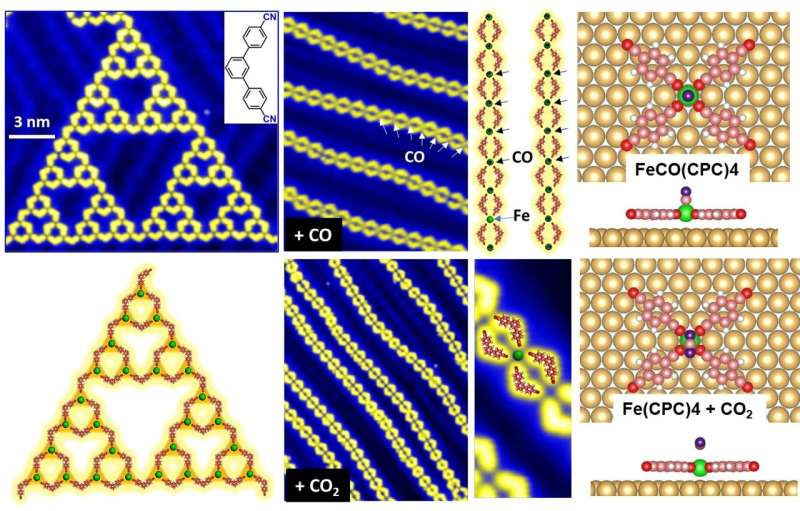This article has been reviewed according to Science X's editorial process and policies. Editors have highlighted the following attributes while ensuring the content's credibility:
fact-checked
trusted source
proofread
Scientists determine gas molecules induce transition from Sierpiński triangles to one-dimensional chains

Many molecules assemble into crystalline or disordered glassy structures on surface. With certain assembly approaches, specific molecules can be made to form ordered yet aperiodic structures, such as fractals and quasicrystals. Sierpiński triangles (STs) have been prepared on surfaces and in solutions through halogen bonding, metal-organic coordination, hydrogen bonding, and covalent bonding interactions.
A comprehensive understanding of the growth mechanisms of these fascinating structures is essential for their controlled fabrication on surfaces. Studying their structural transitions may be helpful in this respect. However, reversible transitions between crystalline and fractal structures are still challenging.
A study led by Prof. Yongfeng Wang, Prof. Shimin Hou, Dr. Yajie Zhang (School of Electronics, Peking University) and Prof. Richard Berndt (Institut für Experimentelle und Angewandte Physik, Christian-Albrechts-Universität zu Kiel) found that STs were transformed to 1D chains assisted by CO and CO2 molecules. The paper is published in the journal National Science Review.
C3PC molecules and Fe atoms formed STs on Au(111) through three-fold coordination interactions. After dosing CO molecule, the stable coordination Fe(C3PC)3 motifs changed to Fe(C3PC)4 with an axially bonded CO molecule, which transformed STs into one-dimensional chains. The chains were reverted to STs by annealing of samples. The structure transition could also be realized by CO2 molecules and on the Au(100) substrate. Different to the coassembly of CO with Fe(C3PC)4, CO2 molecules induced the structural transformation through a molecular catassembly process.
The coassembly and catassembly methods might be used to tune other metal-organic structures on surfaces. The catassembly theory was first proposed by Prof. Tian's group of Xiamen University. Then research of catassembly on surface was explored in the early stage by Prof. Kai Wu and Prof. Wei Xu. In this study, the intermediate process of catassembly was visually observed for the first time through the variable temperature experiment, and the mechanism of catassembly was further clarified. This also provided a new way to explore the growth of more special structures in the future.
More information: Chao Li et al, Structure transformation from Sierpiński triangles to chains assisted by gas molecules, National Science Review (2023). DOI: 10.1093/nsr/nwad088
Provided by Science China Press




















